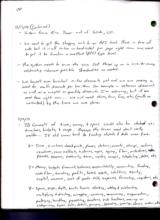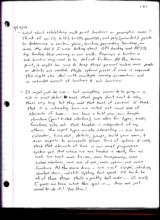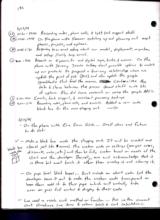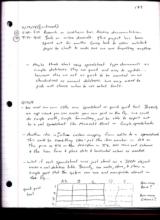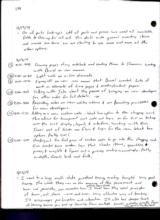|
Basic Assignments
|
Options & Settings
|
Main Time Information
|
||||||||||||||||||||||
|
|
|
|
|
||||||
|
||||||
|
|
|
Notes:
|
|
3D Concepts of time, money, and space could also be stated as: timelines, budgets, and scope. Anyway, the terms used don't really matter... It still comes back to tracking objects and data over time. -X=Time, timelines, checkpoints, phases, stations, events, stamps, actions, reactions, cause and effects, histories, ages, aging, flow, milestones, periods, seasons, maturity, term, cycles, ranges, scheduling, dates, etc. -Y=Money, budgets, financials, balances, accountability, accounting, funding, cash flow, trending, profits, losses, assets, liabilities, equity, capital, revenue, cost of goods sold, expenses, forecasting, registers, etc. -Z=Space, scope, depth, levels, layers, stacking, adding and subtracting, multiplying and dividing, wrapping, covering, uncovering, organization, packaging, bundling, processing, locations, sub locations, moving or categorizing, types, subs, details, grouping, spreading, joining, chaos, order, etc. -What about establishing multi-point locations or geographic areas? Think of uni (1), bi (2), tri(3), quad(4), and poly(unlimited) points to determine a certain place, location, perimeter, boundary, or area. My dad and I were talking about GPS tracking and RFID tag tracking this morning on our walk. Anyway, a location or sub location may need to be defined further. At the same point, it might be nice to keep things general unless more points or details are needed. Maybe optional pieces if more is required. This might also deal with multiple naming conventions and an unlimited amount of locations and sub locations. -It might just be me... but everything seems to be going in a sub or small detail level. Most people don't want to stay there very long but they need that level of control. I think that it is interesting how we rolled out round one of elements of time... We have a build your own temple structure (point and click interface), we allow for types, kinds, functions, subs, etc. Each template is independent of any others. The report types are also interesting... We have calendar, time-slot, details, groups, build your own, and even exports to Microsoft Excel. Tons of options. I really think that elements of time is our most progressive system yet. And where we are headed is really fun as well. We want more tie-ins, more transparency, more custom interfaces, more ease of use, more options, and more functions. At the same time... we want simple, intuitive, dumbed down, and still lightning fast speed. It has to be all of these things. That's a pretty tall order... Well, I guess we know what the goal is... Now we just need to do it! Yee Haw! On the phone with a developer from Salida... Small ideas and future to do list: -Make a black box inside the shopping cart. It will be created and cleared just like normal. The custom code or settings (weight calcs, discounts, rules, etc.) will then be fully custom based on needs of the client and the developer. Basically, we will acknowledge that it is there but won't touch it other than creating it and clearing it. (Black box inside the cart) -On page level black boxes... Don't include an abort code. Let the developer leave it out to make the custom code transparent or have them add it to their page which will virtually take over or pass full control and display to their code. -We need a recalc cost method or function... Pass in the current cart structure line items and return totals and cart calculations. -Maybe think about using spreadsheet type documents as simple databases. They are quick and easy to update... however they are not as quick to be searched or as standardized as normal databases. We may need to pick and choose when to use what tools. -We need our own little mini spreadsheet or quick grid tool. Basically an app where you can create your own grid on the fly. We could do simple math, simple formatting, and be able to export out to a real spreadsheet like Microsoft Excel or Google spreadsheets. -Another idea is to allow custom mapping from adilas to a spreadsheet. This could be something like – put the item number in G4 or the price in H4 or the description in I4. Use rows, columns, and the laser focus and place data and hardcoded values as needed. -What if each spreadsheet was just stored as a JSON object verses a real database table. Basically, can make, store, and show a simple grid that the system can use and manipulate almost on the fly... (Sketch in photo gallery – quick grid tool, How many rows? How many columns?) -On all parts look-up’s add all parts and pieces. We need all available fields to show up for roll call. This deals with general inventory items and invoice line items. We are starting to use more and more of the other options. |

